How to Make Probiotic Ginger Beer – a naturally fermented probiotic drink that is packed with health benefits. This article includes a photo tutorial, information on secondary fermentation, flavoring your ginger beer, and troubleshooting when the process goes awry.
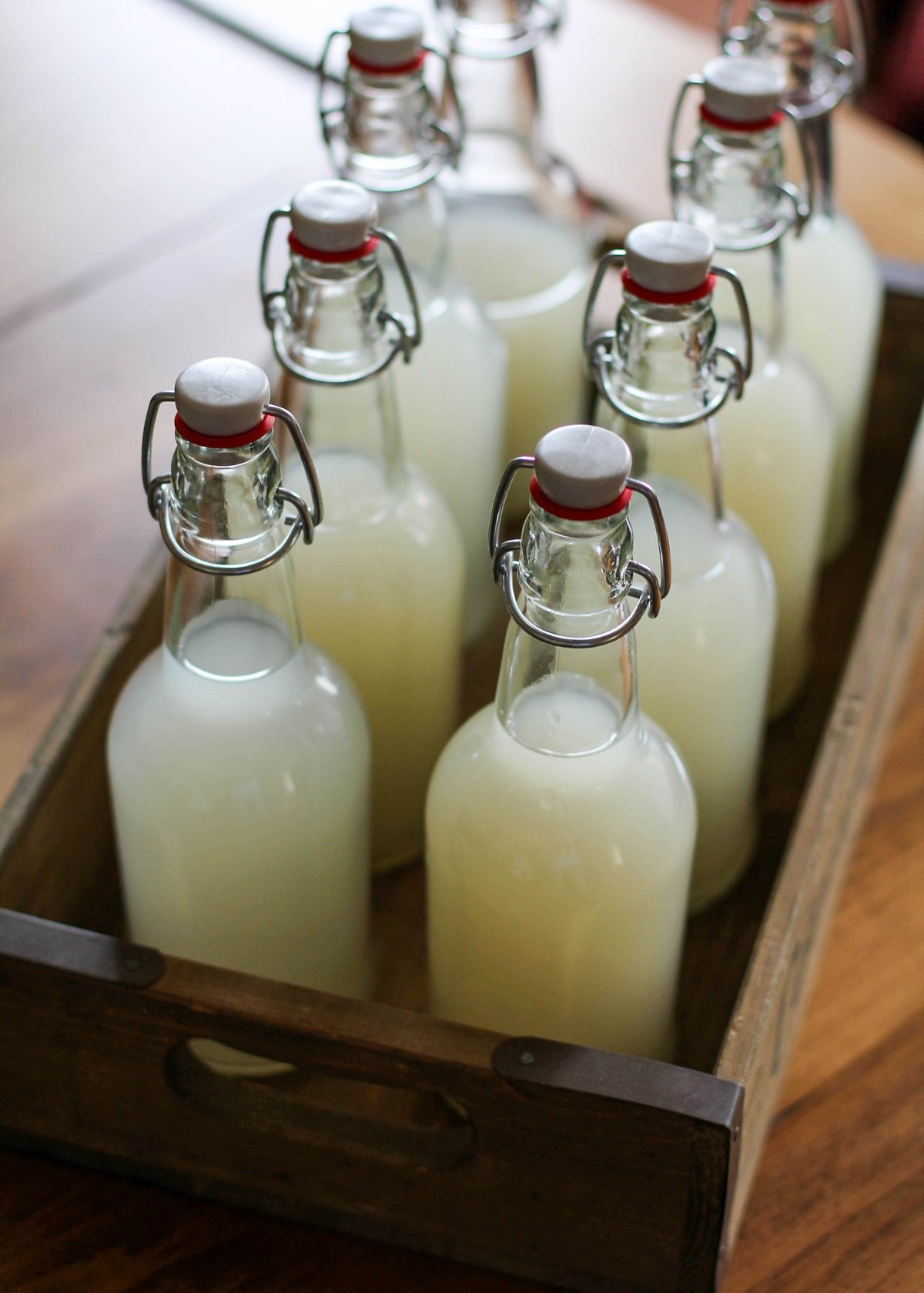
Disclaimer: brewing probiotic beverages at home can be risky. When fermenting probiotc foods and beverages, use caution. Always use sanitized tools and when in doubt, throw it out! If you notice any strange smells or mold, be sure to discard the whole batch.
Many moons ago, I wrote a cookbook called Delicious Probiotic Drinks. This cookbook is focused entirely on making probiotic-rich beverages such as kombucha, kefir, ginger beer, fermented vegetable juice, and more, at home.
My favorite of all the fermented beverages to make is ginger beer. First and foremost, it is magnificent tasting.
Secondly, it is CHALLENGING.
Perhaps the most challenging and unforgiving of all the fermented drinks.
And for that reason, the most rewarding.
For those of you who have been around this site for a long time, you may remember my easy tutorial on How to Make Ginger Beer.
This is the goof-proof method that works each and every time and does not require much time or attention.
This version of probiotic ginger beer is different. It involves preparing a “ginger bug” (or ginger starter) from scratch.
How does that work?
Probiotics and yeast are naturally occurring everywhere. They are in our fruit and vegetables and are also present in the air. Giving these probiotics and yeast optimal conditions to grow and reproduce results in fermentation.
You’re already familiar with this concept, as it is the same process for creating yogurt, cheese, beer, wine, pickles, prosciutto (and other fermented meats), etc.
Applying this idea to fresh ginger is how we create a ginger starter, which is then used to make ginger beer.
Don’t worry…I’ll go over how to make a ginger starter in excruciating detail later on in this post. First, let’s cover some basics.
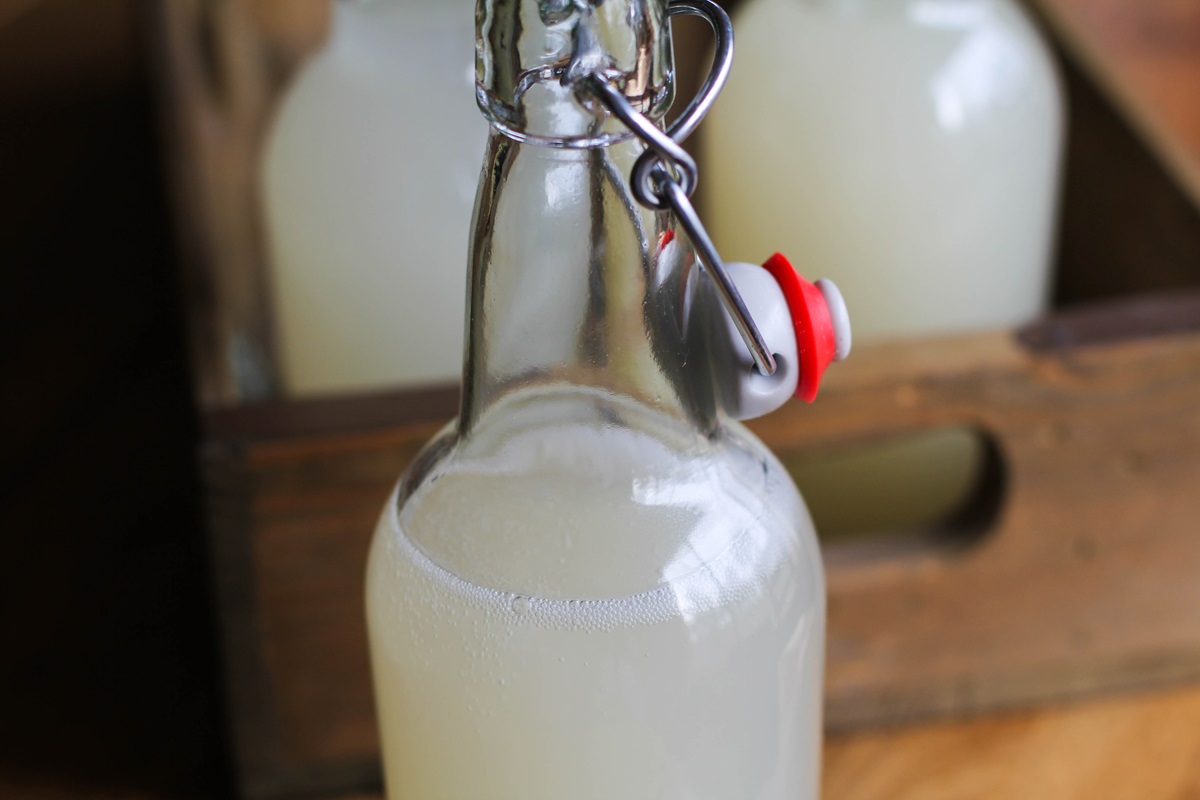
WHAT IS GINGER BEER?
Ginger beer is a naturally fizzy beverage with a sweet and spicy bite. Grated ginger is fermented in sugar water and lemon juice, allowing the natural yeasts in ginger to feed and multiply, creating a probiotic beverage.
While ginger beer is a sweet, spicy, delicious beverage all on its own, it is famous for its role in cocktails, particularly the Dark & Stormy cocktail, a mixture of ginger beer and rum, garnished with a slice of lime.
WHAT IS THE DIFFERENCE BETWEEN GINGER BEER AND GINGER ALE?
The phrases, “ginger beer” and “ginger ale” are typically used interchangeably, but there is a difference between the two beverages. Ginger beer is fermented for up to 2 or 3 weeks using a “ginger bug,” where ginger ale is more of a ginger flavored soda.
While there are ginger ale beverages made with real ginger, most ginger ales are simply carbonated water with ginger flavor and sugar. In this sense, ginger ale does not go through the same fermentation process that ginger beer does.
METHODS FOR MAKING GINGER BEER
There are multiple ways to make ginger beer. Here are three of the most common methods:
- Non-probiotic ginger soda/ale: For those who aren’t concerned about the probiotic benefit of fermented ginger beer, you can simply combine ginger simple syrup (made with ginger and sugar) with soda water and achieve a great-tasting homemade beverage. This version contains no probiotics and is basically fancy soda.
- Quick and Easy Ginger Beer with some probiotic benefits: This fast method uses bread yeast for fermentation and requires only two days to complete. For this version, read my blog post on How to Make Ginger Beer. This version is not as probiotic rich, but is still lower in sugar than regular soda.
- Authentic Probiotic Ginger Beer – a health elixir: The authentic method for making fermented ginger beer is outlined in this post. It uses a probiotic-rich “ginger bug” (or ginger starter) which you make yourself at home. Like most things in life, the authentic version takes much longer than the easy version, but also yields great results. This version can take between 2 and 3 weeks to complete.
HEALTH BENEFITS OF GINGER BEER
Fermented ginger beer has a great deal of health benefits and is commonly used to ease upset stomach, nausea or diarrhea.
Ginger is an anti-inflammatory, which can help with migraines, and studies show fresh ginger prevents and fights several types of cancer cells including breast, colon, ovarian, prostate, and lung cancer.
Ginger is also known for cleansing the body of toxic chemicals, easing menstrual cramps, and much more!
The probiotics and yeast that grow during the fermentation process help colonize your gut with good bacteria, which helps boost immunity, fight disease, and promotes overall health.
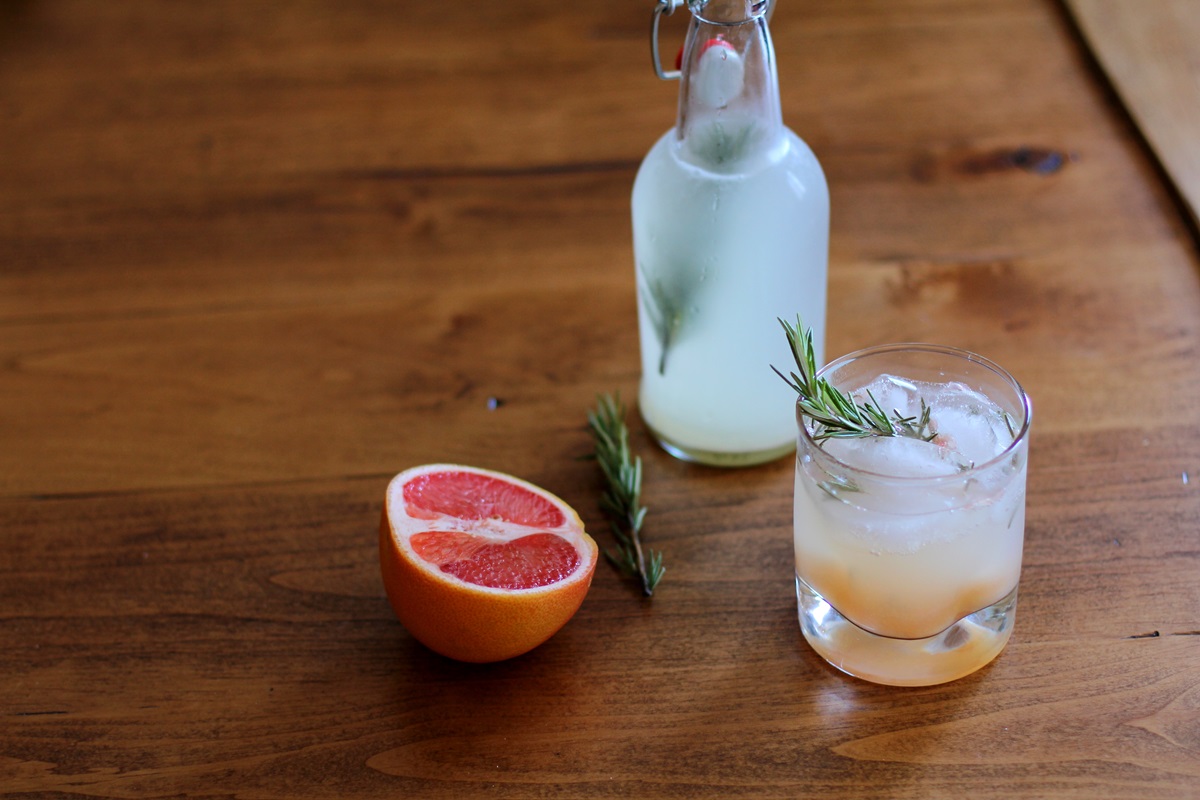
HOW TO MAKE FERMENTED PROBIOTIC GINGER BEER
Fermented probiotic ginger beer requires a three-step process.
Step 1: Make a “ginger bug” or starter using fresh ginger, water, sugar and lemon juice. This starter is used to brew a batch of ginger beer (Step 2). This can take 1 to 2 weeks to complete (depending on the temperature of your home and how active your culture decides to be).
Step 2: Brew a large batch of ginger beer using the “ginger bug.” You could compare this process to making a batch of sourdough bread dough using sourdough starter. This process takes about 1 to 3 weeks, depending on how active your ginger bug is and how warm your home is.
Step 3: Bottle the ginger beer and allow it to ferment further. Once the beverage becomes effervescent (fizzy/probiotic-rich), bottle it and allow it to sit for “secondary fermentation” (more on this below). This process takes about 2 to 5 days.
You Will Need:
- 1-quart glass jar or jug
- Cheesecloth
- Stretchy rubber band
- 1-gallon glass jug
- Flip-Cap Bottles
- Fresh ginger
- Organic Cane Sugar
- 2 to 4 Lemons
Ingredients for the “Ginger Bug:”
- 1-inch nub fresh ginger, peeled and grated, plus more for feeding the starter
- 1 tablespoon raw organic sugar, plus more for growing the starter
- 2 cups water
Instructions for the Ginger Bug / Ginger Starter:
Peel and grate a 1-inch nub of fresh ginger (about 1 tablespoon).
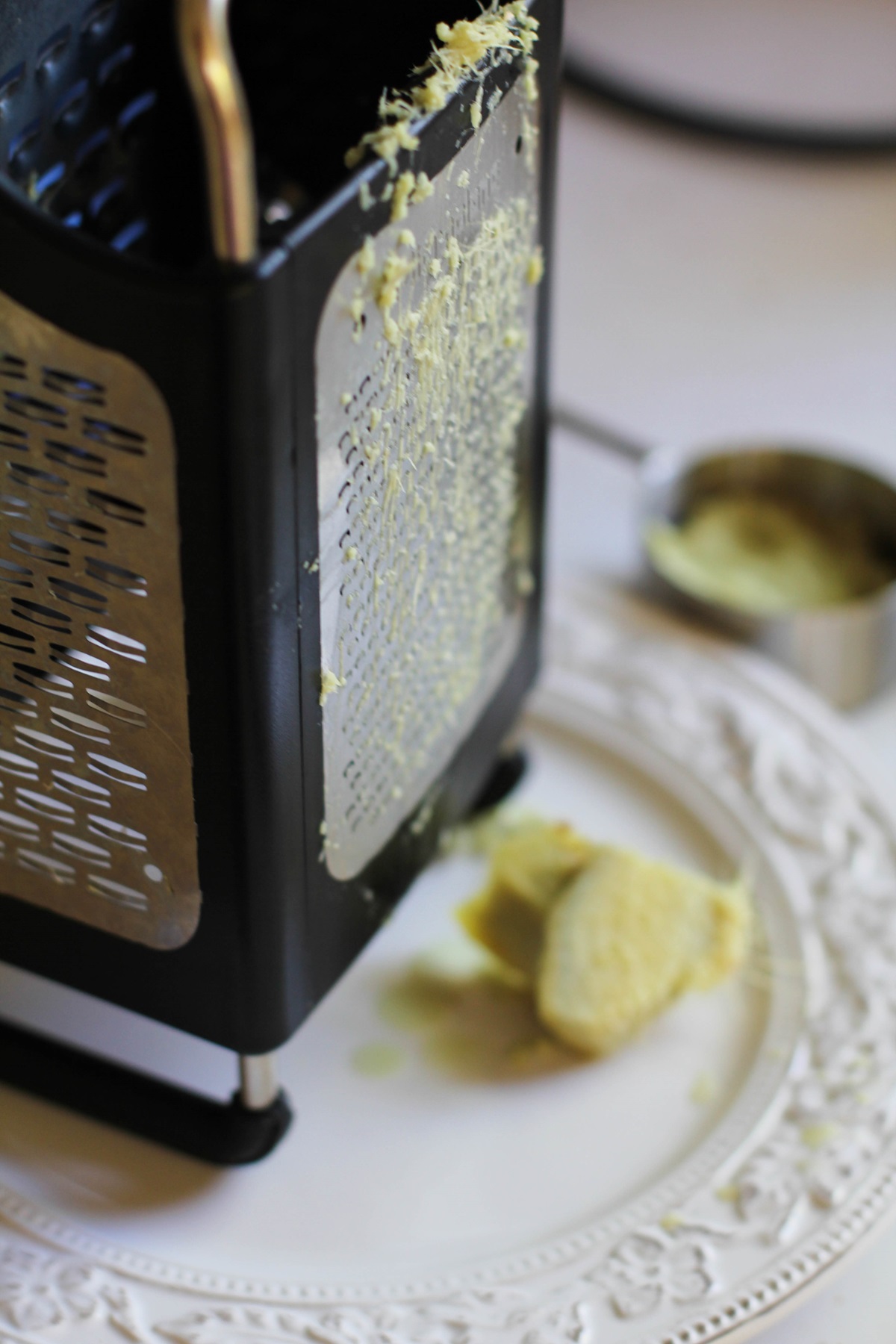
Add the grated ginger, 1 tablespoon of sugar, and two cups of filtered water or spring water (non-chlorinated) to the jar and stir (a 1-quart jar works great).
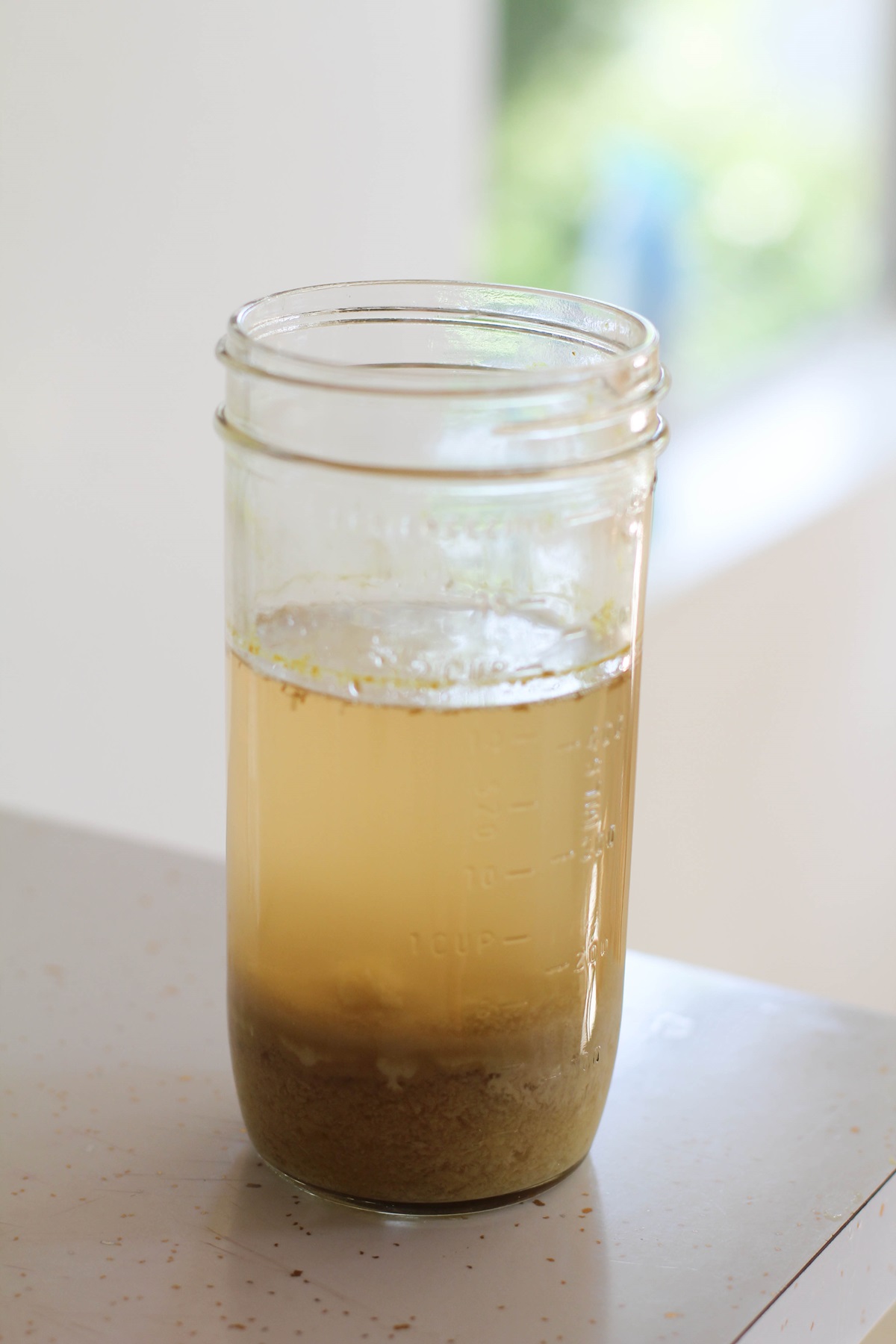
Cover the jar with a cheesecloth or towel. Secure the cloth around the jar with a rubber band. This keeps insects away from the starter.
Allow jar to sit in a warm, dark place for 24 hours. The optimal temperature for preparing the ginger starter and brewing ginger beer is between 70 and 85 degrees.
If your house stays cool, find the warmest spot in your home to place the ginger starter. This process activates the probiotics and yeast that are in the ginger and allows them to begin reproducing.
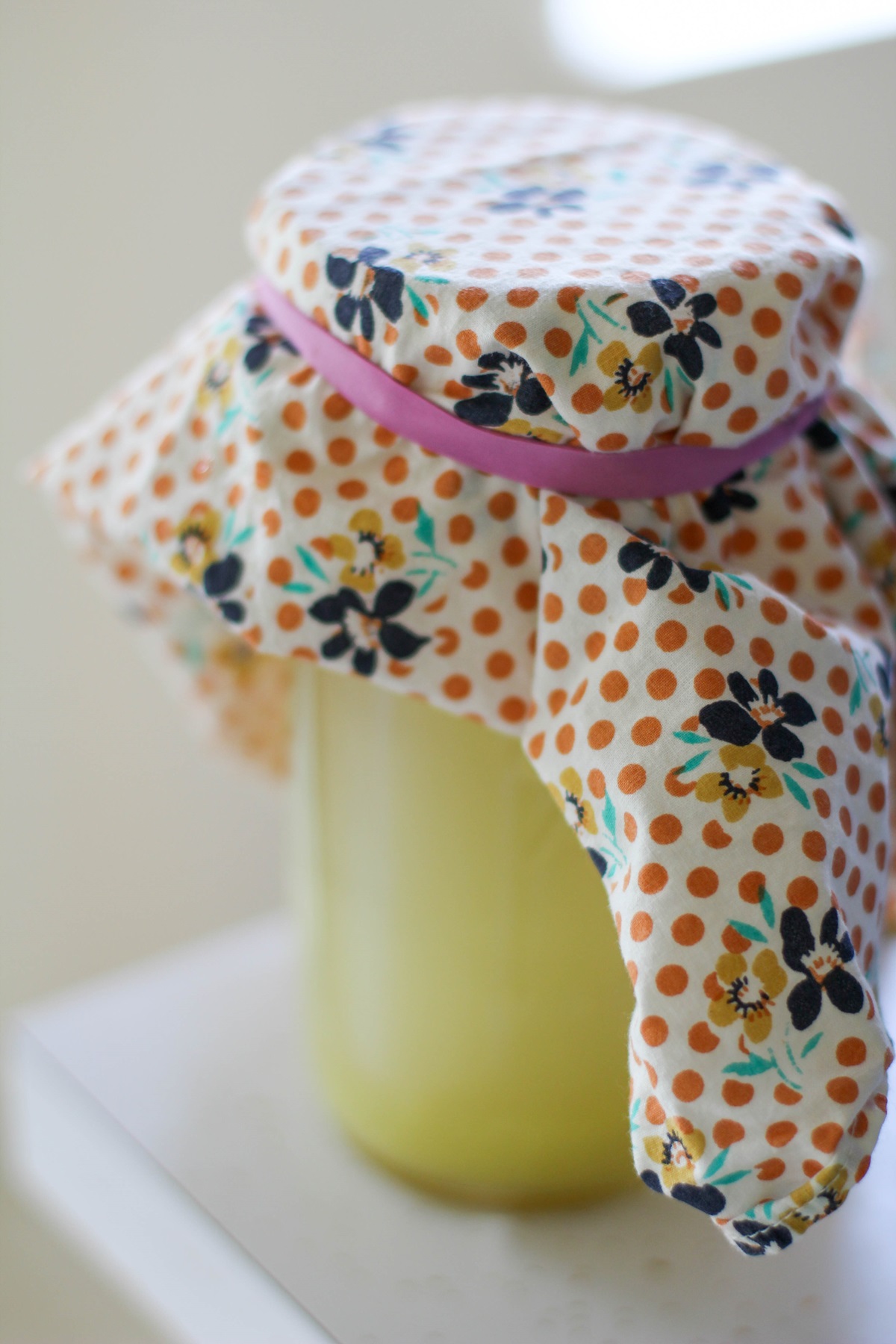
Feed the colony – Once a day for one week, add one teaspoon of sugar and one teaspoon of grated fresh ginger to the jar and stir well.
This ensures your ginger starter stays fed and grows, similar to sourdough starter. Stir a couple of times per day.
During this process, natural yeasts are released and create a white substance at the bottom of the jar. This is where the probiotics come from.
After about 3 to 5 days (perhaps longer if your house is very cold), the liquid will begin bubbling when you stir it. Once you can see and hear bubbles without touching the jar, your ginger bug is ready to be used. This will usually take 7 to 10 days in a warm (70 to 80 degrees F) house, but longer in a cool house.
To expedite the process, wrap the ginger starter jar in a heat blanket or an insulated blanket to keep it warm. If after 7 days, your ginger bug is still not bubbling, continue adding a teaspoon of sugar and ginger until it does. Have patience, friend!
In some cases, folks have gotten bubbles within only a few days of beginning their starter. While this is unusual, it is a sign the starter is ready! As soon as you see the bubbles rushing from the bottom to the top, you’re ready to go.
Use the liquid from ginger starter to make ginger beer (instructions below).
You can continue adding water, ginger, and sugar to the starter and to use it for multiple batches of ginger beer. In this sense, you can treat your ginger starter the same way one would treat sourdough starter and keep it alive.
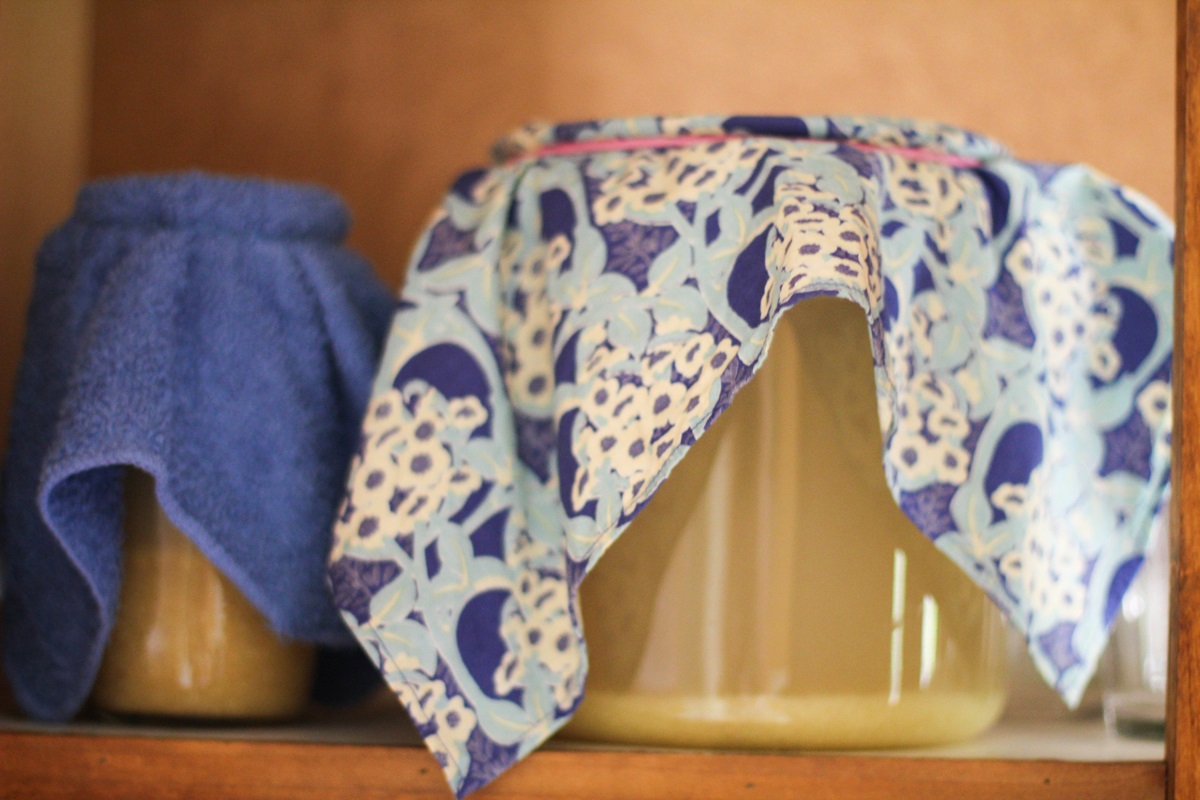
Note: If you ever see mold floating on top of the starter liquid, discard the starter and make a new one.
Ingredients for the Ginger Beer:
- 1 cup ginger starter (see above)
- 1 scant gallon of filtered spring or well water
- 1 1/4 cups organic cane sugar
- 1/2 cup fresh lemon juice
- 1/3 cup fresh ginger, grated
Instructions for 1 Gallon of Probiotic Ginger Beer:
Fill a gallon-sized jug most of the way up with spring or well water (do not use water from the tap unless your house runs on a well). This water should be room temperature or slightly warmer (aim for 70 to 80 degrees).
Add one cup the the ginger starter, along with 1 1/4 cups of sugar, 1/2 cup of lemon juice, and 1/3 cup of grated ginger. Stir very well.
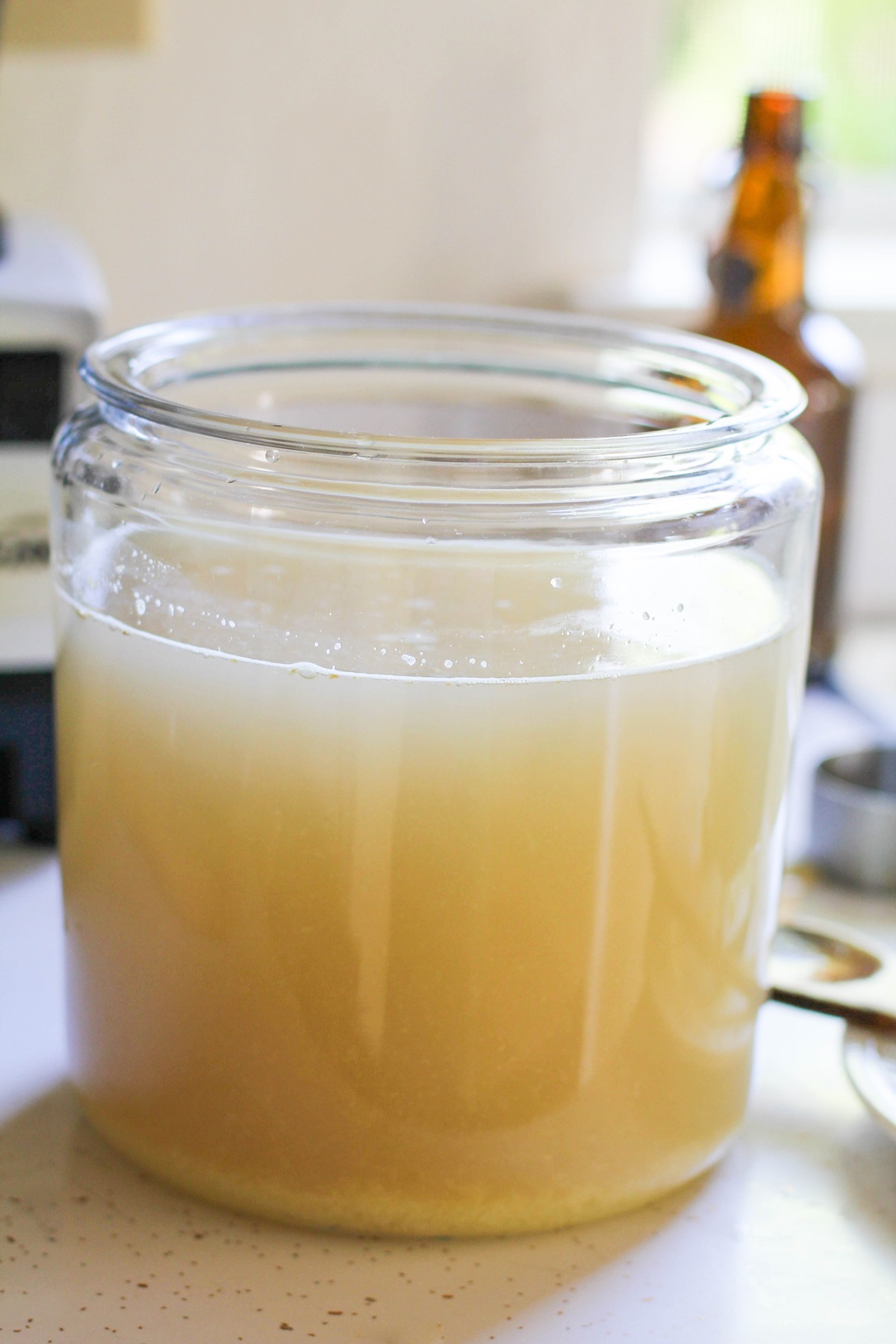
Cover the jug with a cheesecloth or towel bound by a rubber band and put it in a warm, dark place at room temperature for 8 to 10 days. Mine takes 8 days, even in a very warm (80⁰F +) house.
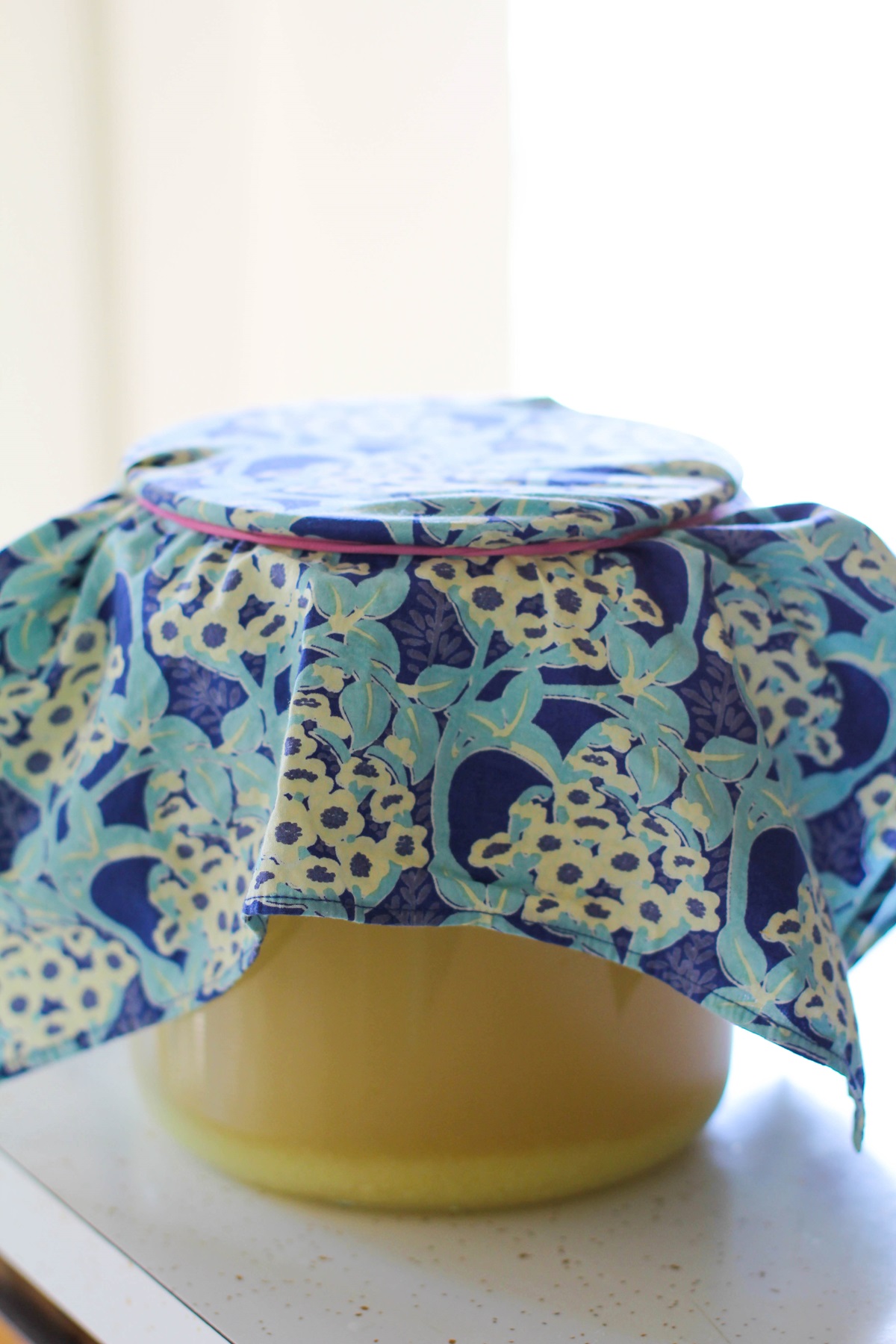
Taste-test the mixture periodically to see if more sugar needs to be added (the natural probiotics will eat the sugar so if the beverage ever loses all of its sweetness, add a little more sugar (no more than 2 tablespoons at a time), but be careful to not overload the probiotics, as they can die when given too much sugar.
Stir the mixture once or twice a day. You will notice a white substance forming around the ginger at the bottom of the jug.
This is the natural yeasts coming out of the ginger – it’s a good sign! There will also be large bubbles that form on the surface of the liquid.
The ginger beer is ready when the substance becomes bubbly when stirred (similar to when you’re making the ginger starter).
Once the ginger beer is ready, give it a taste test. If it doesn’t taste sweet, add additional sugar and ginger because once you bottle the brew, it goes through secondary fermentation and the probiotics continue to need to eat sugar.
At this point, your options are to either bottle the ginger beer as-is or flavor it prior to bottling it. See information on Secondary Fermentation and flavoring options below.
Pour the liquid (including the ginger pulp) into sealable bottles and set them in a dark room for 2 to 4 days. This process makes the ginger beer very fizzy.
The warmer the room, the faster the beverage gets fizzy, so open a bottle every day or so to check the fizz and level of sweetness.
Both the fizz and sweetness is up to your taste but be very careful to not allow the bottles to sit for too long because they most definitely will explode.
Place bottles in the refrigerator to calm the fermentation process. Note that the ginger beer will continue to ferment in the refrigerator, so try to consume the beverage within a few days after secondary fermentation is complete for best results.
Leaving it in the refrigerator for longer than a week will result in a “drier”, less sweet ginger beer.
You can now brew another batch of ginger beer using the ginger starter you have been feeding. Because your ginger starter is now more mature, it will take a little less time to brew your second batch.
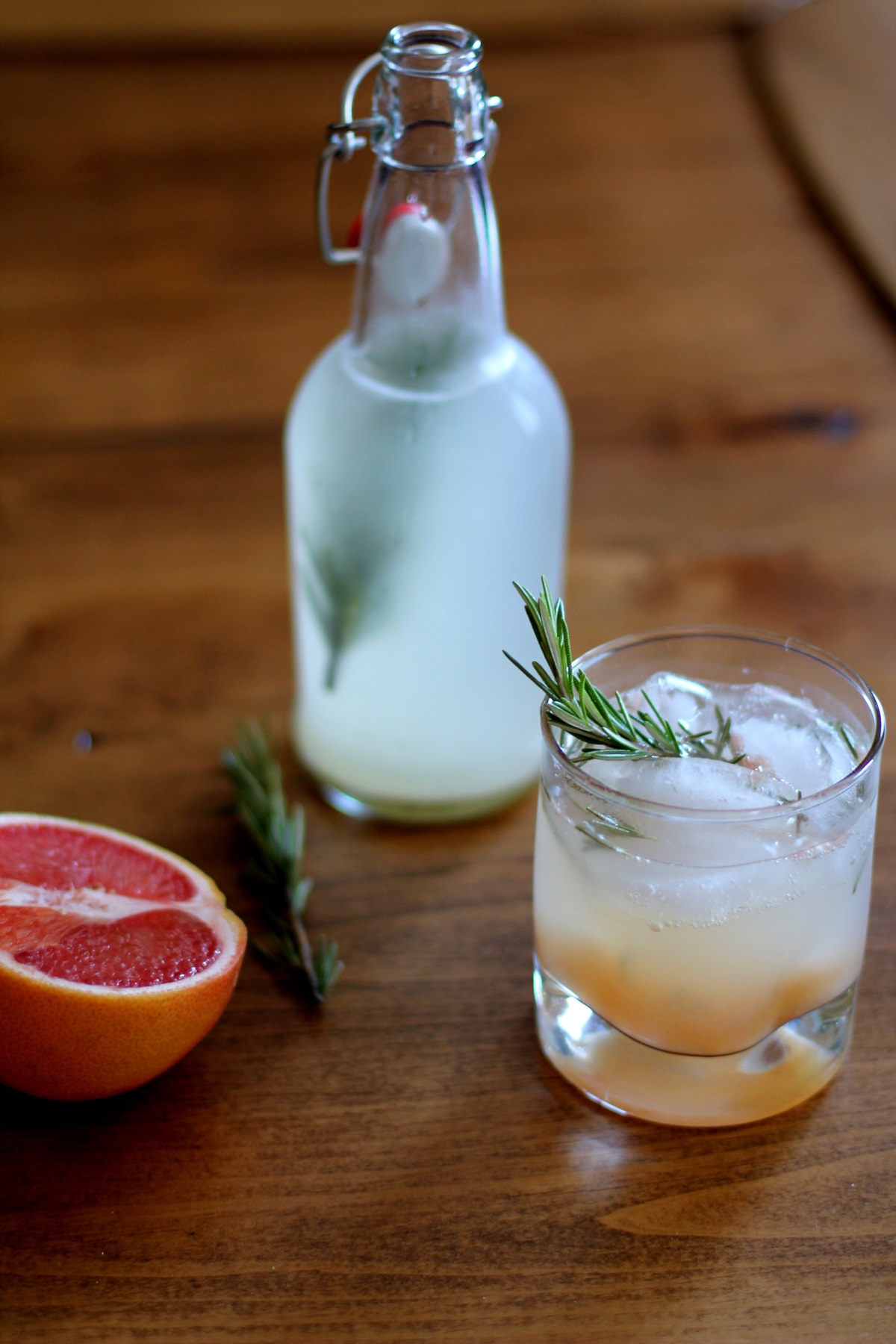
SECONDARY FERMENTATION
Once ginger beer is finished with its primary fermentation, you may add additional sugar and/or ingredients (see “Flavoring Ginger Beer” section below) to flavor it and allow it to go through a secondary fermentation.
The purpose of secondary fermentation is threefold: To achieve a fizzy beverage (it will get just as fizzy, if not fizzier than soda!), to make the drink even more probiotic-rich, and to give it delicious flavor.
FLAVORING GINGER BEER
Ginger beer is perhaps the easiest probiotic drinks to flavor because just about any type of fruit and/or herb goes wonderfully with ginger.
The fact that there is already a great deal of sweet and spicy flavor in ginger beer provides a wonderful canvas for incorporating other sweet, sour, tart or creamy flavors.
In this way, the added ingredients are typically what one tastes first when drinking the ginger beer, with the spicy ginger coming through at the finish.
You have a few options for adding ingredients for secondary fermentation. You can add fresh fruit juice, a homemade simple syrup infused with any flavor you like, or a fruit/herb sauce (similar concept to simple syrup).
If you’re adding fruit juice, simply add 1/4 cup to each glass bottle before filling them the rest of the way up with ginger beer. Secure the lids tightly and allow them to sit for 2 days. Immediately transfer to the refrigerator to slow the fermentation process.
Getting creative with fruit and herb combinations is brilliant when it comes to this drink and you are virtually guaranteed to end up with a delicious probiotic drink!
To make flavor ginger beer, choose your fresh fruit and/or fresh herbs.
Combine 2 cups of fresh fruit with ½ cup cane sugar and 1/3 cup water in a saucepan (Note: if you’re adding fresh herbs, do so here as well).
Bring to a full boil and cook until the fruit has softened. Allow mixture to cool completely. Once cool, divide it between the bottles you are using to bottle the ginger beer.
Fill the bottles the rest of the way up with ginger beer, seal tightly, and allow bottles to sit at room temperature for 2 days to undergo secondary fermentation. Transfer the bottles of ginger beer to the refrigerator and chill.
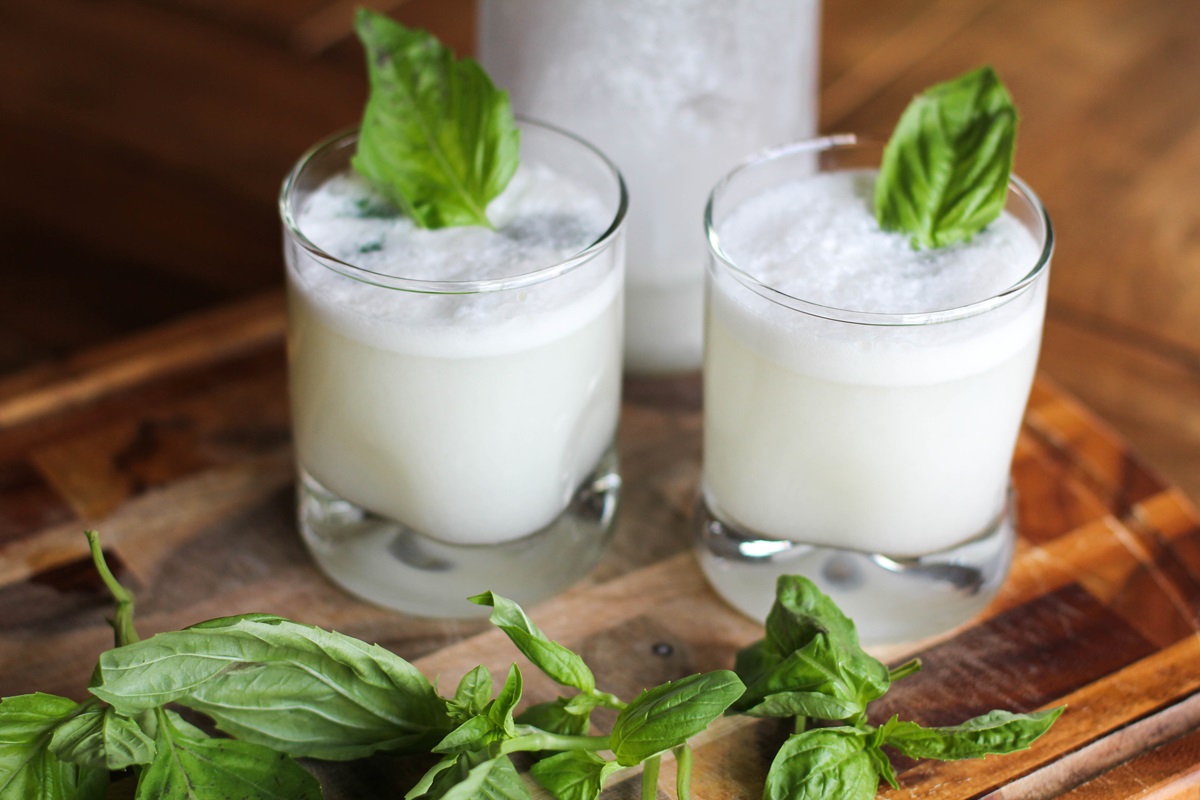
Flavored Ginger Beer Options:
Here are some of my favorite flavor combinations for ginger beer:
- Blackberry Sage (2 cups blackberries, 1/2 cup sugar, 1/3 cup fresh sage, packed)
- Grapefruit Rosemary (1 cup fresh grapefruit juice, 2/3 cup sugar, 3 sprigs rosemary)
- Coconut Basil (1 can full-fat coconut milk, 1/2 cup sugar, 1/2 cup fresh basil, packed)
- Blood Orange (1 cup fresh blood orange juice, 1/2 cup sugar)
- Raspberry Mint (2 cups fresh raspberries, 1/2 cup sugar, 1/2 cup fresh mint)
SHELF LIFE OF GINGER BEER
How long does homemade ginger beer last?
When properly sealed in bottles, plain ginger beer can last for up to one month in the refrigerator. For best results, drink within 2 weeks of brewing.
When ingredients such as fruit, are added to ginger beer, consume within 1 week for best results and keep in the refrigerator for up to 2 weeks. While ginger beer can last even longer than this, it is best to err on the safe side when it comes to probiotics.
A NOTE OF CAUTION
As is always the case with probiotic beverage, be cautious when opening a bottle after secondary fermentation as pressure builds and the drink will be fizzy. Never point a bottle at your face (or at any other person) while opening, and never hand a bottle to a child to open.
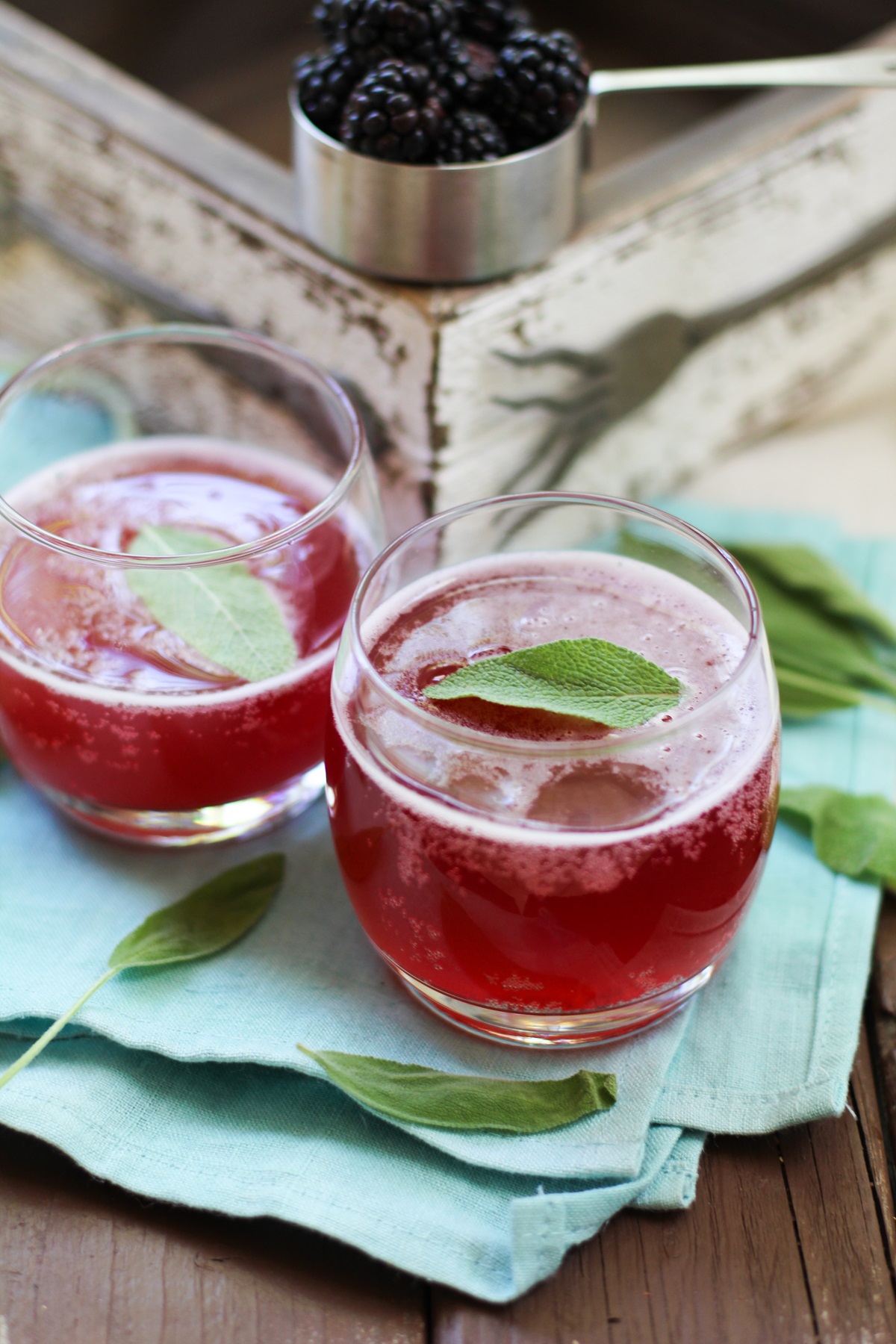
TROUBLESHOOTING
If it seems like either your ginger starter or ginger beer is taking a long time to come to life (get bubbly), don’t worry. This is likely the result of the temperature of your home, and it may just take some extra time.
As mentioned previously, if you want to expedite the process, wrap the jar in a heating pad and set it to a low temperature to keep the starter warm.
On the flipside, in rare cases, a ginger starter may be ready after only a few days. As long as bubbles are flowing from the bottom to the top, that is a sign the starter is rich in probiotics and is ready to be put to use.
Like many probiotic beverages, ginger beer is one of those that seems to be doing nothing for quite some time and then all of a sudden, it’s working.
At the end of secondary fermentation, if your ginger beer too dry (not sweet and very fizzy), this is because the yeast consumed all of the sugar that was in the bottle, leaving very little sweetness for you.
Some people prefer drier ginger beer, but if you prefer it to be on the sweet side, simply make sure you add additional sugar (either cane sugar, fruit, or juice) prior to bottling your next batch.
Did you pop open a bottle of ginger beer after 3 days of secondary fermentation and it wasn’t fizzy and it still tasted sweet? If this is the case, your ginger beer still contains residual sugar that needs to get eaten up by the probiotics. This is okay!
Simply leave the remaining bottles (if any) at room temperature to continue secondary fermentation. Because there was plenty of sugar in the beverage prior to bottling, it will simply take an additional day or two for the probiotics to consume the sugar and for the beverage to become fizzy.
How to Prevent Flat Ginger Beer:
To prevent flat ginger beer, be sure there are small bubbles that rise from the bottom to the top of the liquid prior to bottling it for secondary fermentation, as this is a sign of probiotic activity. Keep in mind that even if your ginger beer does not get fizzy, it is still full of probiotics and is great for you!
Wondering if Your Batch is Bad?
If at any point you find mold on the surface of your ginger beer while it is brewing, throw the whole batch out, even if it is only a tiny bit of mold. Ginger beer is easy to re-make (especially since you already have your ginger starter ready to go), and it is not worth sacrificing quality and health even if it is frustrating to have a failed batch.
Any Questions??
I hope this post will inspire you to make your own naturally fermented healthy ginger beer at home!
Be sure to check out my cookbook, Delicious Probiotic Drinks for more recipes for fermented beverages!
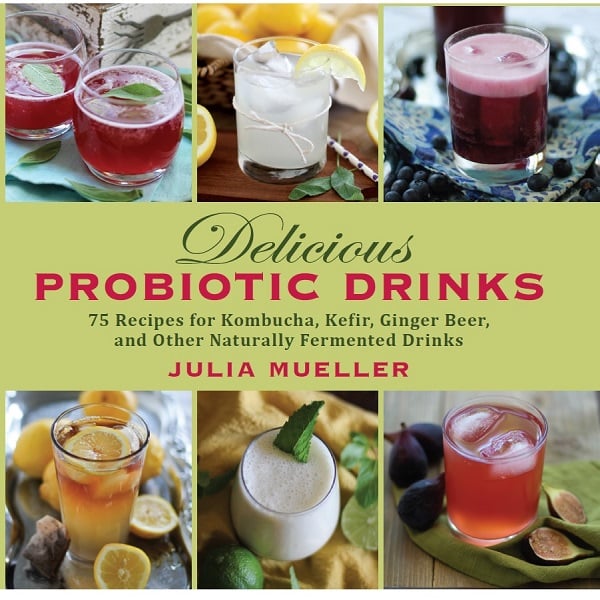
If you enjoy home fermentation projects, also check out my tutorial on How to Brew Kombucha.
Check out my latest cookbook, Paleo Power Bowls for nutrient-dense meal recipes.
If you make ginger beer, feel free to share a photo on Instagram and tag @The.Roasted.Root!
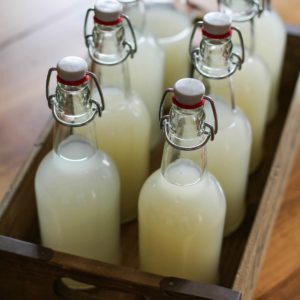
Probiotic Ginger Beer
Equipment
Ingredients
Ginger Starter:
- 1 (1-inch) nub fresh ginger, peeled and grated
- 1 Tbsp organic cane sugar
- 2 cups filtered water
Ginger Beer:
- 1 cup ginger starter instructions below
- 1 gallon filtered water or well water
- 1 1/4 cups organic cane sugar
- 1/2 cup fresh lemon juice
- 1/3 cup fresh ginger peeled and grated
Instructions
Prepare the Ginger Starter:
- Peel and grate a 1-inch nub of fresh ginger (about 1 tablespoon).
- Add the grated ginger, 1 tablespoon of sugar, and two cups of filtered water or spring water(non-chlorinated) to a jar and stir. Cover the jar with a cheesecloth or towel and secure it with a rubber band. Allow jar to sit in a dark place for 24 hours.
- Once a day for 4 to 10 days, add one teaspoon of sugar and one teaspoon of grated fresh ginger to the jar and stir well. This ensures your ginger starter stays fed and grows, similar to sourdough starter. Stir a couple of times per day. During this process, natural yeasts are released and create a white substance at the bottom of the jar. This is where the probiotics come from.
- After 3 to 5 days (longer if your house is very cold), the liquid will begin bubbling when you stir it. Once you can see and hear bubbles without touching the jar, your ginger bug is ready to be used. If after 7 days, your ginger bug is still not bubbling, continue adding a teaspoon of sugar and ginger until it does. Note that amount of time it takes to get a ginger bug active varies widely depending on the temperature of your home and the activity of the bacteria and yeast.
- Use the liquid from ginger starter to make ginger beer (instructions below).
Make the Ginger Beer:
- Fill a gallon-sized jug most of the way up with spring or well water (do not use water from the tap unless your house runs on a well). This water should be room temperature or slightly warmer (aim for 70 to 78 degrees).
- Stir the ginger starter well. Add 1 cup of the ginger starter, sugar, lemon juice, grated ginger, and the ginger starter. Stir very well. Cover the jug with a cheesecloth or towel bound by a rubber band and put it in a dark place at room temperature for 8 to 10 days.
- Taste-test the mixture periodically to see if more sugar needs to be added (the natural probiotics will eat the sugar so if the beverage ever loses all of its sweetness, add a little more sugar (no more than 2 tablespoons at a time).
- Stir the mixture once or twice a day. You will notice a white substance forming around the ginger at the bottom of the jug. The ginger beer is ready when the substance becomes bubbly when stirred (similar to when you’re making the ginger starter).
- Once the ginger beer is ready, give it a taste test. If it doesn’t taste sweet, add additional sugar and ginger – once you bottle the brew, it goes through secondary fermentation and the probiotics will need more sugar to survive.
- At this point, your options are to either bottle the ginger beer as-is or flavor it prior to bottling it. If you choose to leave the ginger beer as-is, simply transfer the ginger beer toglass bottles, secure the lids, and place bottles in the refrigerator.
- If you choose to flavor the ginger beer, add your flavoring ingredients to the flip cap bottles (see blog post for flavor ideas and instructions for secondary fermentation) prior to filling the bottles up with ginger beer. Secure the lids on the bottles and leave at room temperature for another 2 days.
- Place bottles in the refrigerator to calm the fermentation process. Note that the ginger beer will continue to ferment in the refrigerator, so try to consume the beverage within a few days after secondary fermentation is complete for best results. Leaving it in the refrigerator for longer than a week will result in a “drier”, less sweet ginger beer.
- You can now brew another batch of ginger beer using the ginger starter you have been feeding. Because your ginger starter is now more mature, it will take a little less time to brew your second batch.
Nutrition
This post contains affiliate links, which means I make a small commission off items you purchase at no additional cost to you.

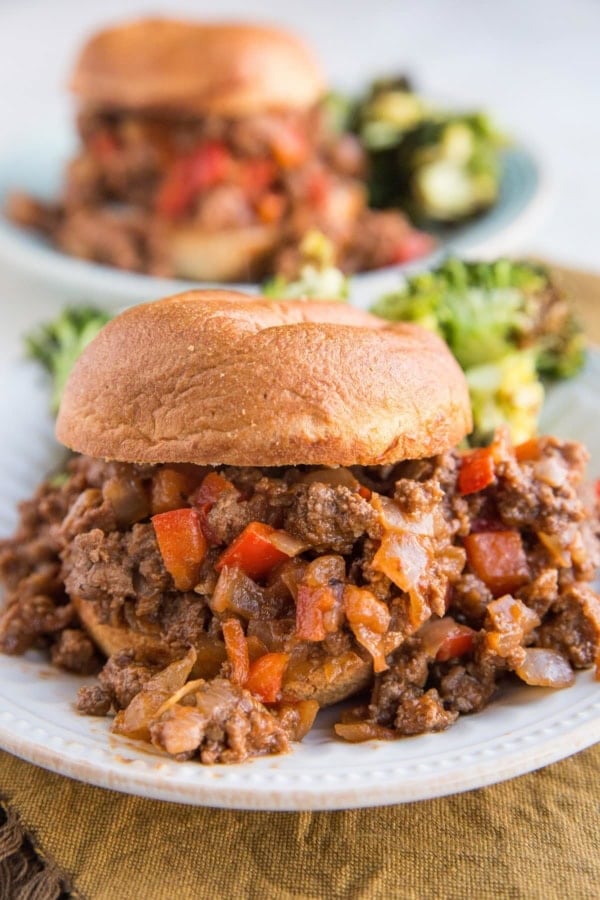
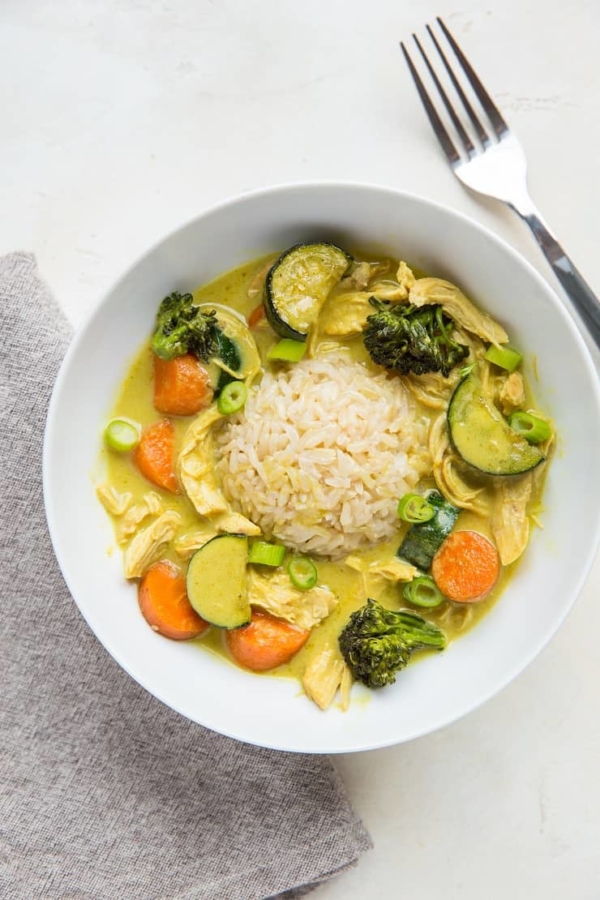
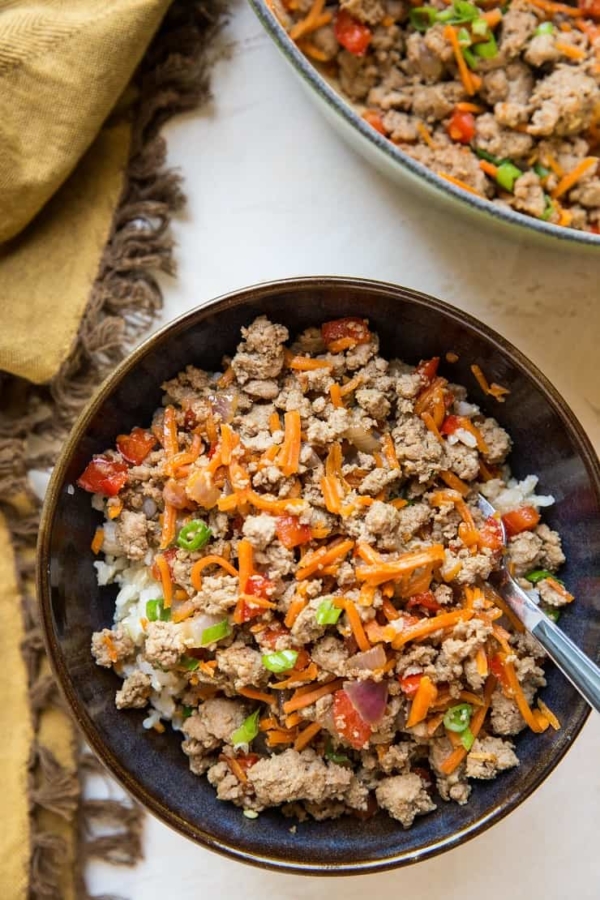
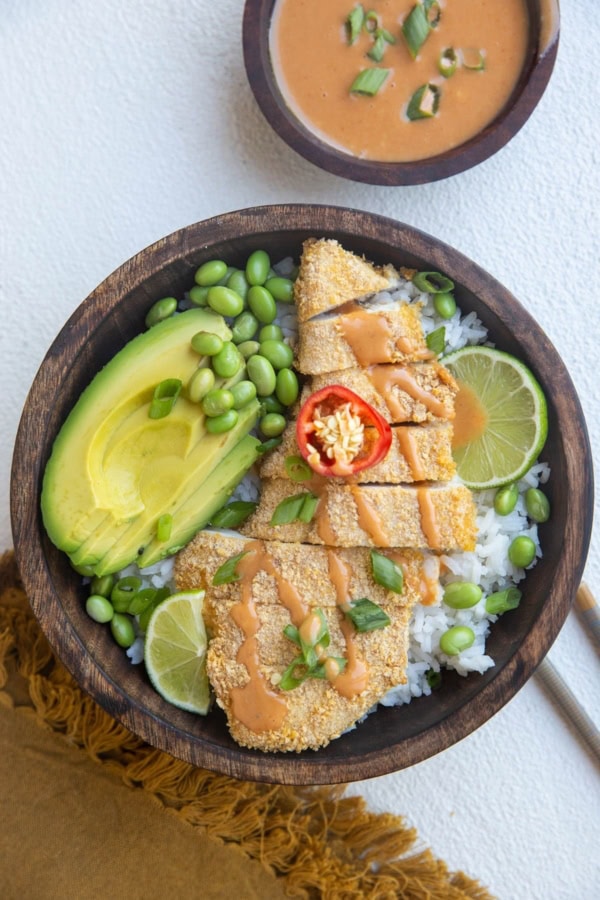









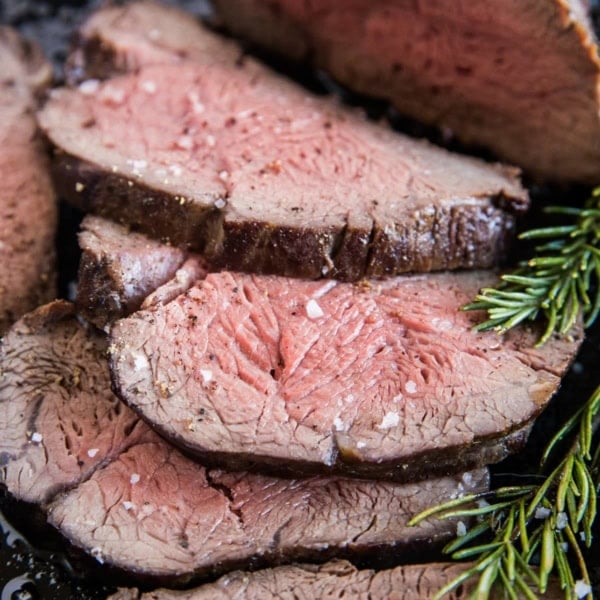
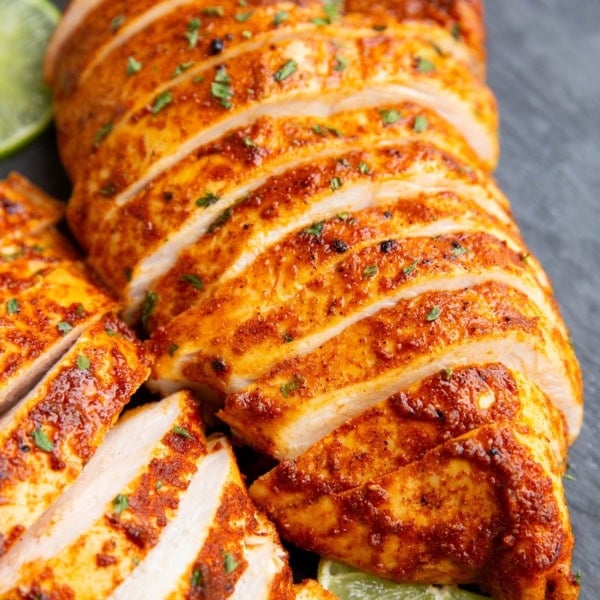
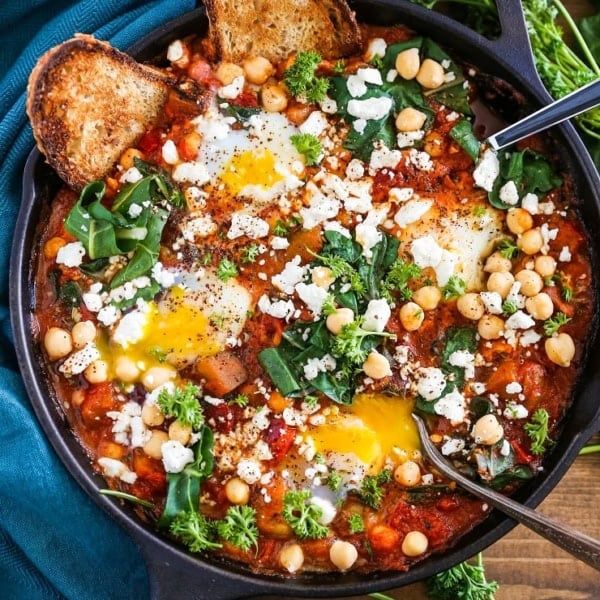
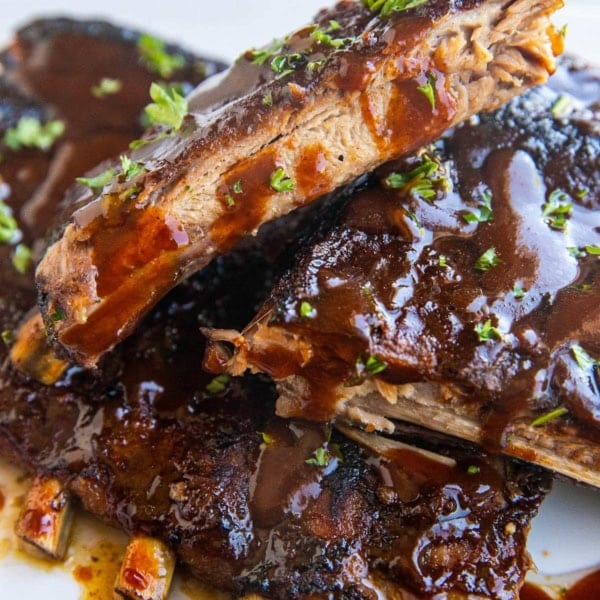
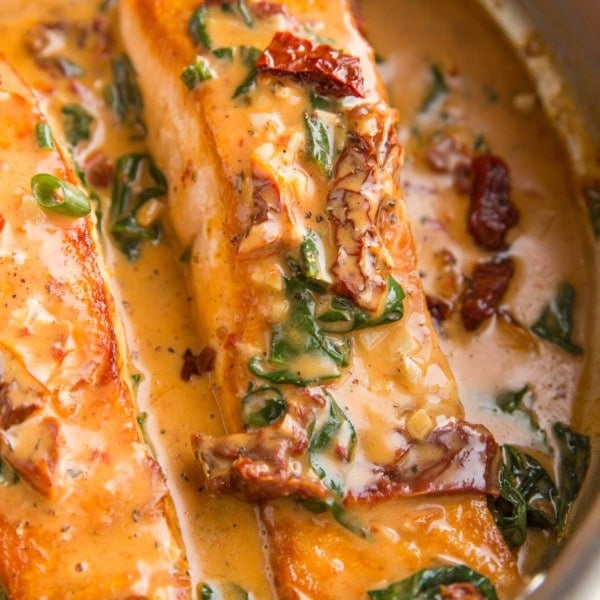
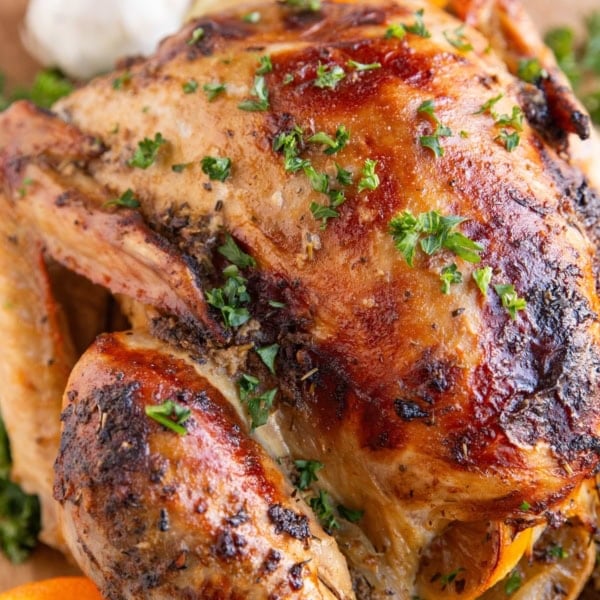
Hi there, what happens with the leftover starter? Do we have to keep feeding daily or can it holiday until needed next? Also I didn’t read properly and had mine on the bench in a warm spot, not dark. Will it still be prebiotic?
Hi Emma,
Yes, you will need to continue feeding the starter, but you can likely drop it down to every other day and have it still be active. To be safe, I would still feed it every day.
As long as your starter has bubbles rising from the bottom to the top, that is an indication the probiotics are still alive.
Thanks for the beautiful post! I’ve tried making my own batch and it should be ready to drink in a couple days. I’m just a little worried about Botulism. Am I way of course here, or is it possible to be present as the drink is not that acidic? Should I add more lemon if it’s a concern? Just getting into making my own fermented foods and have a little fear still. Thanks in advance 🙂
Hi,
Why don’t we need to seal the vessels? Like with those 1 way gas valves? I thought that stuff was needed for the fermentation.
Thanks!
My ginger bug was active, I combined the ingredients fir mixing the ginger beer, and the mixture was fizzy and bubbly after a day and into the second day with a white layer of probiotics at the bottom. On the third day, the mixture went flat and much of the probiotics were gone. I added about 2 tbsp more of grated ginger and 2 tbsp more of sugar and a little more ginger bug to try to kickstart the probiotics in case they had died. Is there anything else I should do to try to regain the carbonation and build up the probiotics before I bottle? Also, when I do bottle, do I strain out all of the ginger? Leave it in? Or strain and put fresh ginger in? Thank you.
Hi Ian,
Ah bummer! It is definitely a finicky beverage to make…I would say as soon as the bubbles are visible in the starter, you’ll want to put it to use by making a full batch of ginger beer. Also try to keep it warm, as bacteria likes to be comfortable 😉 No straining necessary when making a full batch of ginger beer – you’ll want to keep all the pulp. Hope all of that makes sense!
xoxo
Hello,
This is my first try with any sort of fermentation and my bug has started bubbling (very proud) but I have a few questions.
1. In my bug most of the grated ginger is floating, is that ok?
2. When I get onto the actual beer part, does it need to be lemon juice for any chemical reasons? Like for the acid content? Or is that for sugar/flavor? Just curious about future batches.
Thank you very much! It is so cool that you have stayed so active answering questions.
Hi Alex,
It’s fine that the ginger is floating, although I would stir it up quite a bit just to be sure it’s well incorporated into the water/sugar. The lemon juice is for flavor and also to help keep the bad bugs out. Hope you enjoy! xo
Hi there. I am going to start a batch of your ginger beer this coming week. I have just made a simple kind like we did as wee kids, using normal sugar, yeast, and ground ginger. Now I have successfully done that, I want to step it up to the “real deal”
Just wondering as I cant find a simple answer online – how much in grams would the 1Tbsp ginger, and 1/3c grated weigh?
Is it okay to grate a whole ginger, then use to feed and store until the final 1/3c cup ? If so, how would I store it?
When stirring, do you disrupt the bottom as well to mix that in, or do you just stir the top water layer?
Thanks!
Hi Dayna!
I’m so happy to hear you’re interested in trying this method! I’m showing 1 tablespoon of fresh ginger weighs .26 ounces (or 7.37 grams) when grated. 1/3 cup will be about 39 grams.
I recommend grating the ginger fresh off of the root daily, but if you want to grate it all in one go, feel free to do so. I would store it in a tupperware container in the refrigerator if you grate it all at once 😀
Let me know if you have any other questions, and happy brewing!
So to use the ginger bug again do I add another cup of water to it and keep feeding it indefinitely?
I.e. replacing the cup of liquid I took out
Hi Cameron! You nailed it. You’ll replace what you removed and continue feeding it 😀 Hope you enjoy! xoxo
Can you also grate all the ginger to feed the bug in advance?
How do you look after the ginger bug after the first week and after the first brew so that you can make more? Do you have to feed it 1 teaspoon sugar and 1 teaspoon ginger everyday to keep it alive?
Thanks.
Cam
That’s correct – feed the ginger bug 1 tsp fresh ginger and 1 tsp sugar every day until bubbles begin to rise to the top from the bottom of the jar. I wouldn’t grate the ginger in advance just to be certain it stays fresh 😀 Hope you enjoy!
I’m excited to try this! My partner needs to be low-glycemic, and I’m wondering if most of the sugar content gets eaten by the bug (similar to kombucha)?
If you’re worried about the sugar content of the finished product, there are two ways to go about it.
The gist is: the longer it ferments, the less sugar will be left, so you’ll probably need to let it ferment longer in primary, letting it get fairly dry then adding a small amount of sugar before bottling. (My gut says teaspoon – when making beer we only add a tablespoon to a 5-gallon batch for carbonating in the bottles)
Here’s where your options come in:
Way #1: just taste it – if it’s sweet there’s still sugar.
Way #2: I’d strongly suggest that you invest in a hydrometer so you can actually measure the amount of sugar in the brew; these are fairly inexpensive, you can get them at any home brewing supply store, and the clerks will be happy to teach you how to use it. The main advantage here is that you can **know** how much sugar there is for sure, so you can better do portion control and that sort of thing.
I should also note: You do need to use proper sugar, no stevia or anything like that, but I’ve heard of people having luck with lower glycemic index sugars, like coconut sugar.
Happy experimenting!
Thanks so much for your input here, Chris! I couldn’t have stated it better myself 😉 xoxo
Thank you!
I don’t have organic sugar. Can I use plain white sugar?
Hi Stephanie,
Yes, absolutely! Enjoy! xoxo
Hello, Everything went as described until I bottled the ginger beer, within a day or so everything thickened to a snotty mess! Do you know why this would happen or if it’s fixable?
Hi Sharon,
I’ve never had that experience or anything close to it…what does the ginger beer smell like? It should smell lemony and ginger-y, but not putrid. If your ginger beer smells at all rancid (like rotten milk or vommit), then definitely pitch it. But if it smells “normal,” it could just be that you ended up with a lot of probiotics and yeast. With kombucha, the culture is made using a SCOBY, which is a mass of probiotics and yeast, which is potentially what you grew. If that’s the case it is totally fine…you can just remove any snotty mass and either pitch it or save it to make your next batch of ginger beer. Also feel free to email me photos if you want me to take a look – roastedrootfood@gmail.com
xoxo
Hi, thanks for the excellent instructions. I used to drink a beer or two when I arrived home, now the ginger beer give me much more pleasure and great feeling only after drinking one or two glasses.
I have one question, my fresh ginger beer is nice and fizzy. However when I put it into the refrigerator, it becomes clear, with a white yeast layer on the bottom of the bottle. If you drink the white part your stomach gets very bubbly during the night.
Is there a minimum temp range that it still keep fermenting. I think my fridge might be too cold, at about 4-7 degrees? It seems the fermentation totally stops. My ginger main production vessel is fermenting great and I have nice ginger beer after about 24 hours. at 30 degrees Celsius almost constant. But after refrigeration the freshness is gone.
Hi Rogier!
The ginger beer needs to stay between 70 and 80 degrees Fahrenheit in order to continue fermenting. At a certain point, the bacteria and yeast will run out of food (sugar) to eat and will die, which is why refrigeration is necessary. Hope that helps!
To keep my ginger bug alive how often do I feed it and how much? If I refrigerate it will it come back to life after a few feedings similar to sourdough starter?
Hi Velda! Feed the ginger bug once a day for one week. Add one teaspoon of sugar and one teaspoon of grated fresh ginger to the jar and stir well. I have never tried refrigerating it and bringing it back to life, but my guess is it would be difficult to get it going again. After you make a few batches, you could certainly try to refrigerate the bug and see if it works!
Thank you! I will keep it at room temp for sure! I just made my first batch 1st ferment yesterday! Got a nice active ginger bug so hoping for a great result! Your directions really helped!!!
Hi there, my partner and I attempted making ginger beer about 4 weeks ago, just 2 litres worth for a quick experiment using lemon, ginger, sugar, water and brewers yeast (inactivated) believing the brewers yeast was for brewing. As we found out later the yeast used was a protein supplement from health food store, as opposed to the common mis-conception based in the title ‘brewers yeast’
After realizing we may have used the wrong yeast we have actually noticed carbonization in our bottles. The first 2 weeks we could not see any change, I added a pinch more sugar to each bottle and during the last week I now relieve the pressure in the bottles daily. It’s not like an intense fizz but there is definitely canonization now.
Would this carbonization be due to fermentation of the ingredients alone without the yeast which is in fact de-activated?
Would it be okay to consume anyway although the yeast we added at the start is not the right one for brewing?
Would this be a suitable ginger bug as is?
Thank you for your time =)
Regards Richie.
Hi Richie!
It could be fermentation from the other ingredients, absolutely. As long as the ginger beer doesn’t have a funky smell to it (i.e. smell rancid or like vomit), it should be fine for consumption. I would just try it in a small amount (say 4 to 6 ounces) to start out. Happy brewing! xoxo
Hi Velda, Julia,
Yes you can refrigerate your bug like a sourdough starter. I try to have about twice the bug I need for the beer batch and put the rest back in the fridge with a big tablespoon of fresh ginger and sugar as well as some extra (dechlorinated) water. I then feed it once a week or even once every two weeks with again a tbs of grated ginger and a tbs of sugar. Regularly de-gas if in a closed container as it will continue to ferment. If you leave it for too long, it will die as at some point it will run out of sugar. But as long a sit is bubbly and smells yeasty, you are good!
The cooling does not actually kill the bug, it just slows the fermentation. This way you only have to go through the process of making the bug once and after that you can just pull it from the fridge and start using it straight away. I use about 100ml of the liquid bug per 5 liters. I’ve done it about 4 times over about as many months and works like a charm.
I’ll soon try one of the recipes in this blog, sounds awesome!!
Thanks so much for the note and for posting your feedback, Peter! This is so helpful! Happy fermenting! xo
can you use organic coconut sugar instead
Hi there! I haven’t tried it using coconut sugar, but my guess is it would work. If your ginger bug takes too long to bubble, I would abort mission and stick with cane sugar. Hope it works! xo
Amazing post! You make it easy by breaking this process down step by step. You also make it look so pretty!
I’m so glad you like it! It definitely requires a time commitment and attention to detail, but it is so fun and rewarding!
Are your temperatures Celsius or Fahrenheit?
Hi Sandra! Fahrenheit 🙂
Is there alcohol content? Would this be safe for a pregnant woman to drink to help with morning sickness for example? Thanks!!
Hi there!
There is a very small amount of resultant alchohol, yes. There’s no way to know how much alcohol without owning equipment to test it. That said, I wouldn’t recommend drinking it if you’re pregnant unless your doctor has cleared you to drink other probiotic containing drinks and food, like kombucha or kimchi…better safe than sorry! To help ease morning sickness, I would stick with ginger tea using fresh ginger, and/or peppermint tea. Let me know if you have any other questions!